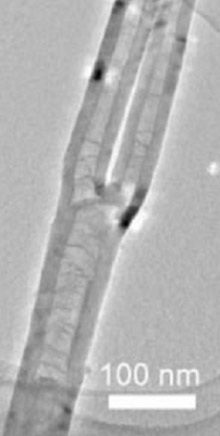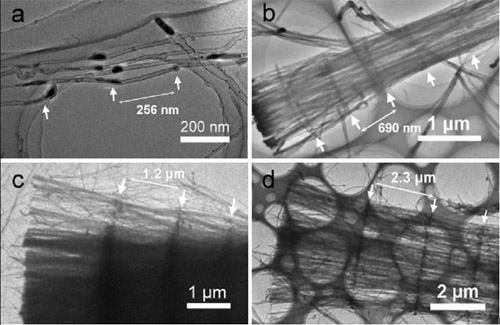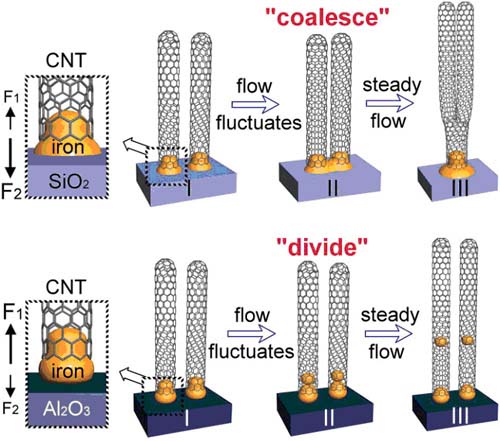| |
Dacheng Wei, Lingchao Cao, Lei Fu, Xianglong Li, Yu Wang, Gui Yu and Yunqi Liu*
Branched or encapsulated nanostructures, as two basic architectures and required building blocks for ‘bottom-up’ approach, have widespread applications in nanoscience and nanotechnology. To realize these applications, the architecture must be controlled. However, till now we still lack an effective method to control the architecture in the synthesis, although much attention is focused there. For example, many methods have been reported to synthesize iron encapsulated carbon nanotubes (CNTs) for their significant applications in nanomagnetics or bioengineering. On the other hand, till now no effective method can control the position of encapsulated particles, so the applications like high density magnetic storage are limited in success, although the foreground looks fascinating. Here we have developed a new method (flow fluctuation method) to solve this problem, and controllably synthesized branched (Figure 1) or iron-encapsulated CNTs. The position of encapsulated iron nanoparticles can be well controlled by flow fluctuation (Figure 2). A mechanism of flow fluctuation-promoted coalescence or division of catalyst particles is proposed to explain the branching or encapsulating process (Figure 3). And the adhesion forces of the substrate play an important role in the process. The method is economical and controllable, opens up new avenues for controllably synthesis of branched or encapsulated nanostructures, will be valuable for applications of branched or iron-encapsulated CNTs in nanoelectronics or nanomagnetics.
Advanced Materials (2007, vol 19, 386-390).

Figure 1. TEM image of a branched CNT.

Figure 2. TEM images of iron-encapsulated CNT arrays. The CNT arrays were produced by sequential flow fluctuations at intervals of a) 0.5, b) 1, c) 2, d) 4 minutes.

Figure 3. Schemes of the formation process of branched and encapsulated nanostructures, respectively. , |
|
